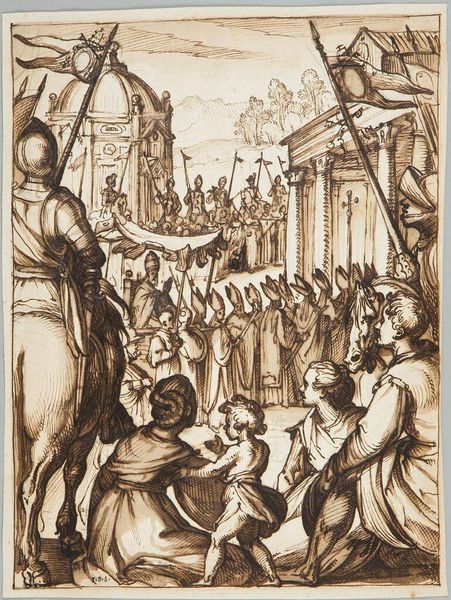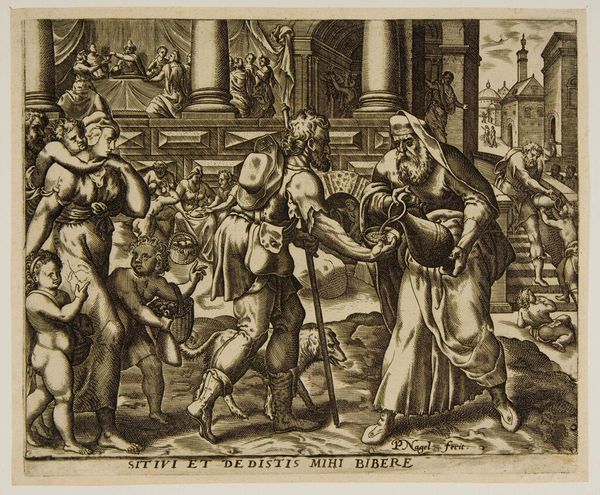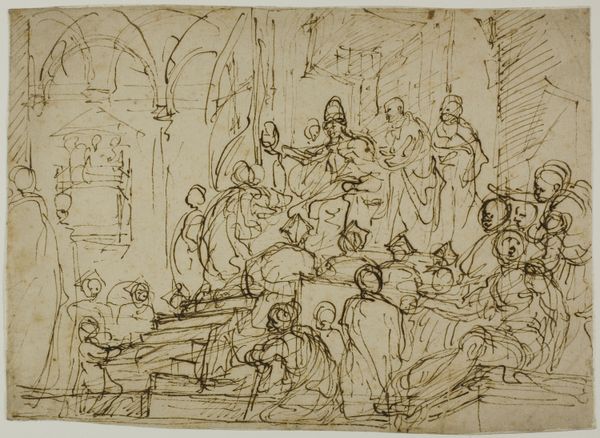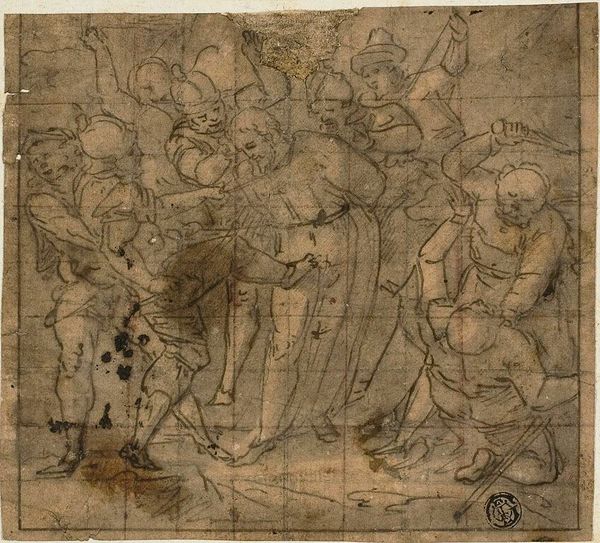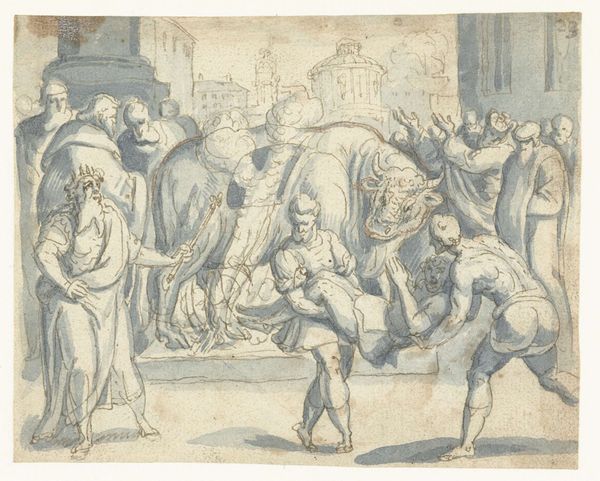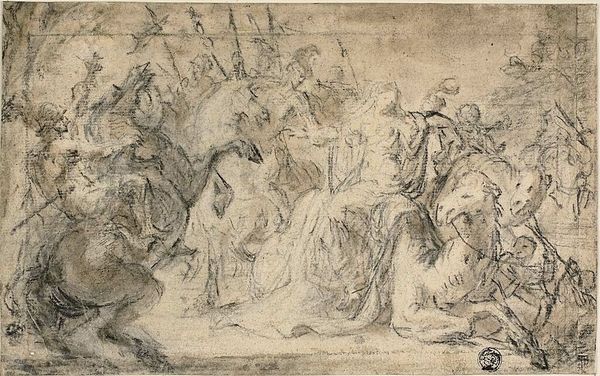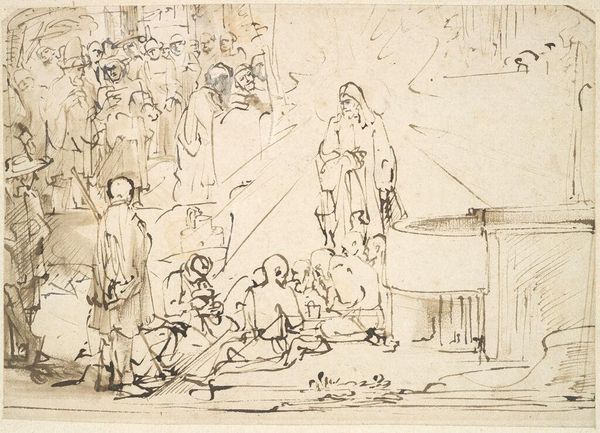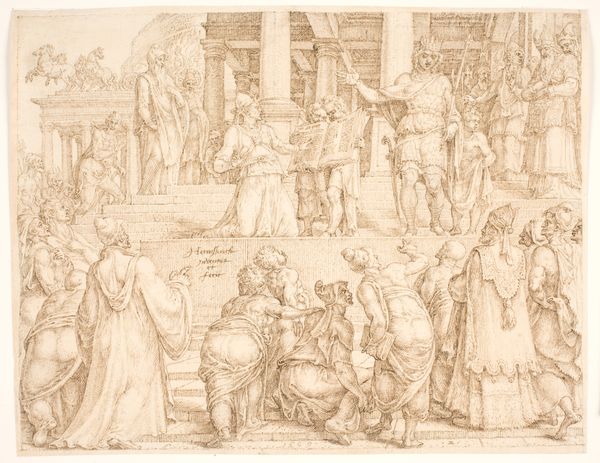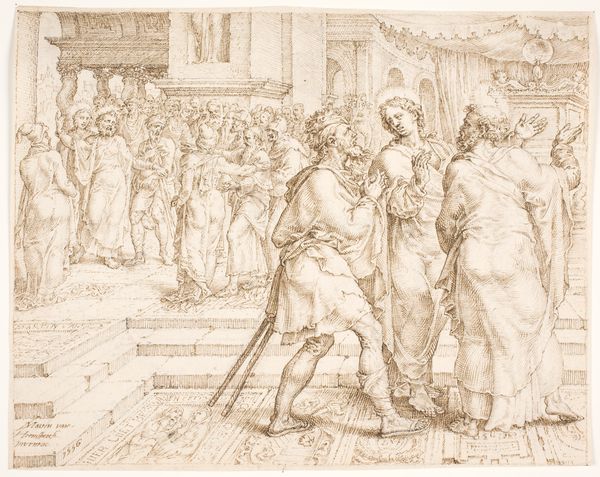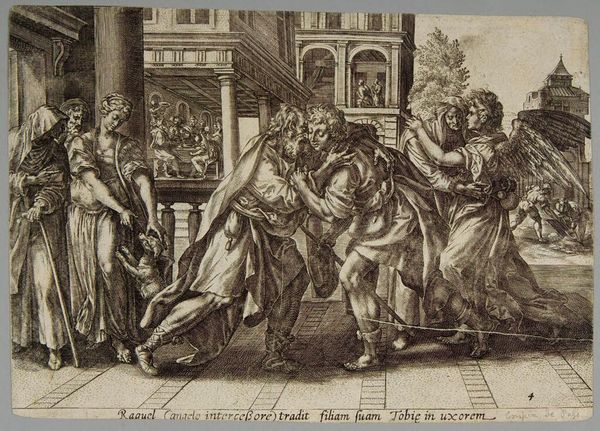
Bishop Blessing a Kneeling Man OR Meeting of Emperor Theodosius and Bishop Ambrose c. 1600
0:00
0:00
drawing, print, paper, ink, pen
#
drawing
#
medieval
#
narrative-art
#
ink painting
# print
#
etching
#
figuration
#
paper
#
ink
#
line
#
pen
#
genre-painting
#
history-painting
Dimensions: 201 × 291 mm
Copyright: Public Domain
Curator: Ah, here we have a pen and brown ink drawing on paper, created around 1600. It is currently titled either *Bishop Blessing a Kneeling Man* or *Meeting of Emperor Theodosius and Bishop Ambrose*, and attributed to Luigi Benfatto. Editor: Whoa, the moment I look at it, I sense the gravity of the scene. All those lined figures – I feel like they're witness to a very humbling moment. I notice right away the kneeling figure; he's got to be somebody really powerful surrendering something big. It makes me feel quiet. Curator: Absolutely. Both suggested titles hint at the dynamic—one of religious authority intersecting with secular power. Historically, the image resonates with depictions of Emperor Theodosius's penance before Bishop Ambrose of Milan, a symbolic clash of empire and church. This moment highlights the complex dance of religious and secular law during the period. Editor: I dig that clash—visible even now, in how it is laid out. This Bishop is such a severe figure at the end of this line of lookers on. The Emperor on his knees—it's quite striking. What is going on with the folks on the left there, hanging out down in the front? Curator: Intriguing observation! Those figures seated at the forefront serve almost as a Greek chorus, reacting to and perhaps commenting on the central event. Some have interpreted them as observers, others as figures representing societal unease or perhaps even a form of quiet opposition. This tension between participants and observers heightens the narrative’s dramatic weight. Editor: Right, I can see that—like they're embodying the varied public reaction! Very neat, a kind of public relations maneuver maybe? Anyway, that semi-circular shape is a fun constraint for all those bodies. So, what did the artist do, then? Plan this for a dome or something? It does have such a finished feel. Curator: Possibly. Such fan shapes were often practice exercises for larger pieces, maybe for mural work. This particular construction helps frame the act while intensifying its resonance for the surrounding viewers. This visual choice—likely rooted in conventional compositional training—strengthens the historical echoes while simultaneously injecting emotion and timeless appeal into a distinct historical event. Editor: Wow, I like how the structure reinforces what's already in the content—visual storytelling turned up to eleven. Makes you consider these moments where religion and ruling got tangled together, doesn’t it? So much symbolism everywhere you look! Curator: Precisely. And this close looking into the drawing reminds us how crucial those moments were for setting up future historical contexts.
Comments
No comments
Be the first to comment and join the conversation on the ultimate creative platform.
